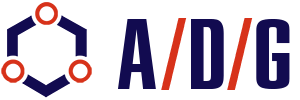The amount of information is increasing exponentially.
However, companies need to learn how to interact with today’s volumes of data in order to increase their efficiency and be competitive in the market.
Several levels of information
Raw data arrays obtained as a result of observing a certain dynamic system or object and displaying its state at specific points in time.
Processed data that carry some informational value for the user; still raw data, but already presented in a more compact form.
Peculiar «know-how», display hidden relationships between objects that are not publicly available, also data with high entropy or a measure of uncertainty.
What we offer
We can help you connect data of all your business processes with critical external sources (public health status, utility data, financial indexes, economic indicators, government policy, climate and geo indicators etc.) to forecast your future results.
The ultimate goal of data mining is to find hidden predictive information from a large amount of data. We can help you use your own data to forecast future outcomes.
Fresh, new ideas & bold goals
The tasks solved by Data Mining methods are divided into:
Descriptive problems, such as:
Predictive problems, such as:
In descriptive problems, a visual description of the existing hidden patterns is given, at the same time, in predictive problems, the foreground is the question of predicting future behavior, results and trends for which there are no data yet.
And the question always arises –
how to apply them in each specific case?
Statistical methods vs. Data Mining
Traditional methods of data analysis and OLAP are mainly focused on testing pre-formulated hypotheses and rough exploratory analysis, while one of the main provisions Data Mining – search for non-obvious patterns.
Examples of problem statements when using OLAP and Data Mining methods
OLAP What are the average injury rates on company X’s rigs?
DM What are the best predictors of accidents at company X?
OLAP What is the number of drilling equipment failures and the number of contingencies during the past year?
DM What are the reasons for the increase in the number of failures in the operation of drilling equipment and what is the forecast of emergencies with different assessments of the “survival” of the equipment until the end of this year?
OLAP What is the volume of identified “critical” components after a routine check of the technical condition of the drilling rig’s running gear?
DM What factors influenced the shortening of the work timing of component parts for drilling rigs operating in a given region?
OLAP What are the weight and quantity indicators of container intercontinental shipping?
DM Calculate the characteristics of customer groups for shipping and determine which macroeconomic regional indicators have a large impact on traffic volumes?
OLAP What are the indicators of gasoline and diesel fuel consumption of the automobile and tractor fleet when harvesting timber in the northern countries?
DM Calculate the economic effect of switching to gas-cylinder hybrid equipment in the automotive part of the vehicle fleet, including how the increase in engine power will affect the volume of logging transported?
Awesome cases
Data scientists have a deep understanding of statistics and algorithms, programming and debuging, and communication skills. Data science is about applying these three skill sets in a systematic manner, with the goal of improving an aspect of the business.
The scope of Data Mining is unlimited – It is wherever there is any data.
Comming soon. Materials are making up in pages.
Use smart tools
for strong results
Popularity business intelligence tools in our clients.




























